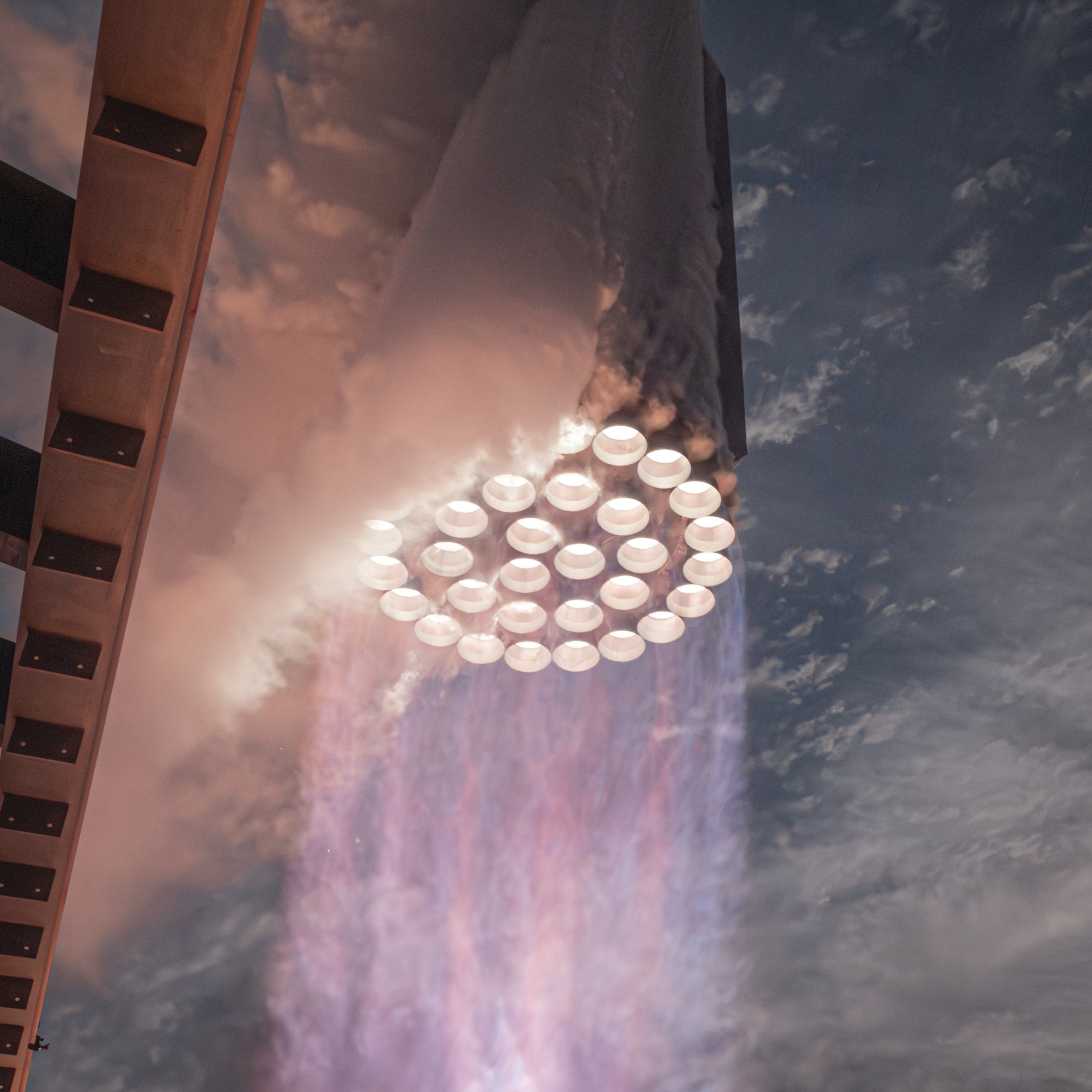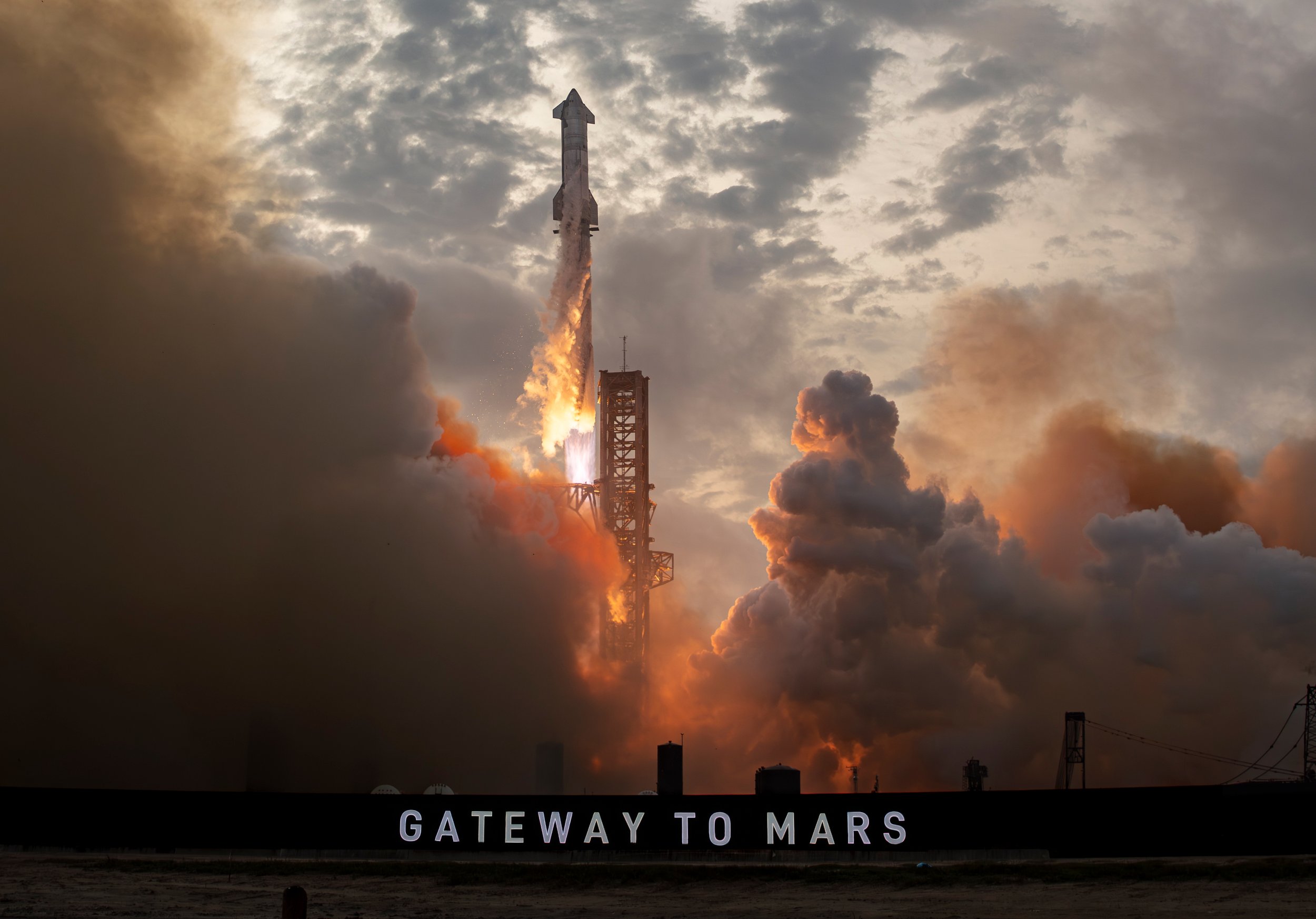Wow! Wow! Wow! Starship’s third integrated test flight was awesome! (Updated)
Starship’s first and second fully integrated test flights initially suffered a three-day and a one-day setback respectively before launching. Such delays have to be expected of a test program based on rapid iterative development. But, today, the excitement just built and built.
The launch window was 110 minutes, beginning at 7.00am (local time). SpaceX first had a targeted launch time of 7.30am, but this was changed to 8.02am to allow a few boats to be cleared from the “keep out” zone in the Gulf of Mexico. T-0 was then shifted a few minutes later to 8.10am to give the boats a little more time. The weather was 70% favourable for launch.
We were told to expect a likely hold at T-40 seconds, but this wasn’t necessary - and the countdown continued uninterrupted to launch.
All 33 Raptor engines ignited and worked well Credit: SpaceX
As in the second integrated test flight, all 33 Raptor engines of the Super Heavy booster ignited and worked nominally, with Starship quickly clearing the pad. This is always the first heart-stopping moment of concern. The hot-staging then worked fine and we were treated to a stunning view of stage separation from the onboard cameras. Shortly afterwards, if alert, you could see Ship 28 moving away into the distance, against the backdrop of the curvature of our planet, courtesy of Booster 10’s camera. As Ship 28 ascended towards orbit, Booster 10 executed the flip manoeuvre and almost made it back down for a controlled sea landing. Again, the views were awesome. However, despite the three designated Raptor engines momentarily coming back on, things weren’t quite right and that part of the test no doubt provided invaluable data to further learn from.
Clearing the launch pad Credit: SpaceX
Next, Ship 28 successfully shut down its sea-level and vacuum Raptor engines, moving into a lengthy coast phase in space. This was a first. Another first was the opening and closing of Starship’s payload door - also achieved. Add to this a propellant transfer demonstration (subject to confirmation, once the data has been analysed) - yet another important milestone for the future. SpaceX decided to skip a final test: the first re-light of a Raptor engine in space.
Ship 28 in space Credit: SpaceX
Last, but certainly not least, we were treated to incredible, jaw-dropping views of Starship re-entering Earth’s atmosphere, thanks to the onboard camera and a Starlink live feed. Three of us watching it all unfold were in awe at what we were seeing. At just past T+46 minutes into the flight, you could see one of the flaps and the heat-shielded side of Starship glowing hot as a plasma field was created by the intense re-entry process. A minute or two before, small pieces of debris went flying past, which looked worrying. Video pictures were lost at T+48.36 minutes, whether caused by a transmission blackout or loss of vehicle. By this point, everyone knew that this test flight had been a phenomenal success.
Heating up Credit: SpaceX
Re-entry Credit: SpaceX
One of the presenters was Dan Huot at Starbase, who provided clear explanations of Starship’s flight. He eventually confirmed that Ship 28 had been lost at some point during re-entry. Reminding everyone that this was a test flight, he brilliantly summarised the importance of learning by saying “the data is the payload”.
Written by Victoria de las Heras, 14th March, 2024
Update: SpaceX have now uploaded a short “highlights” video of Flight 3 to YouTube and here it is:




